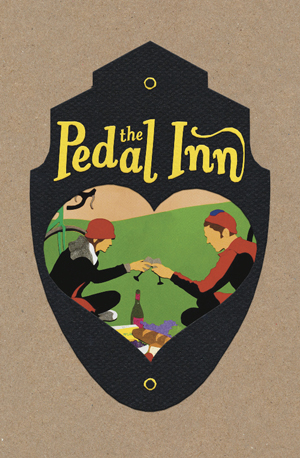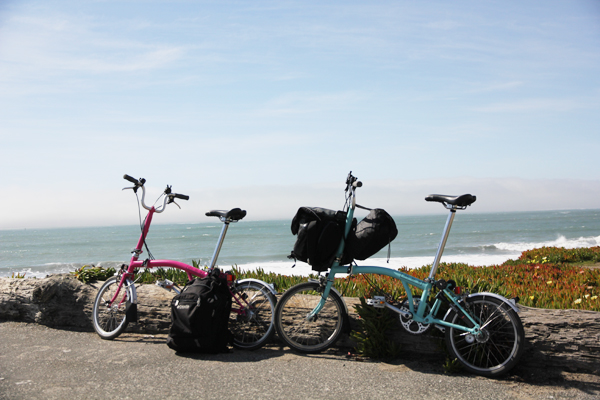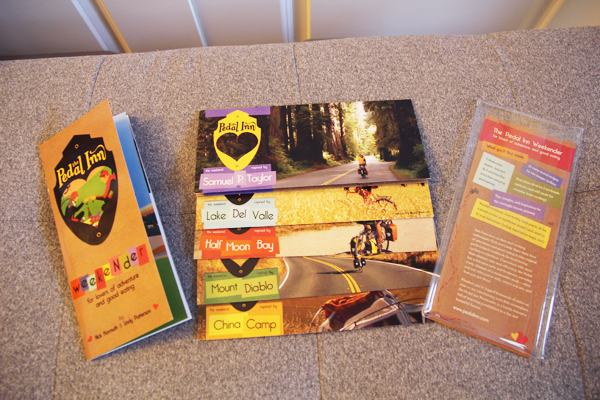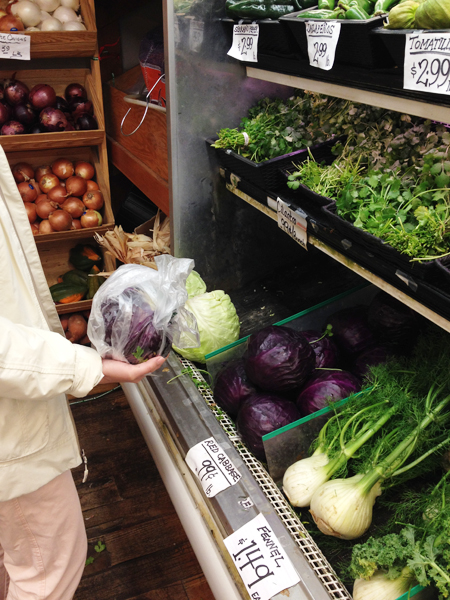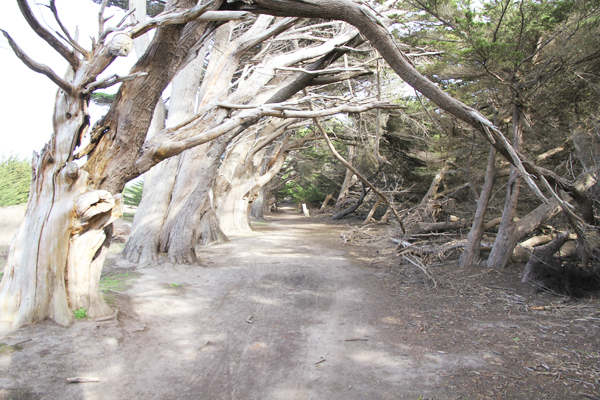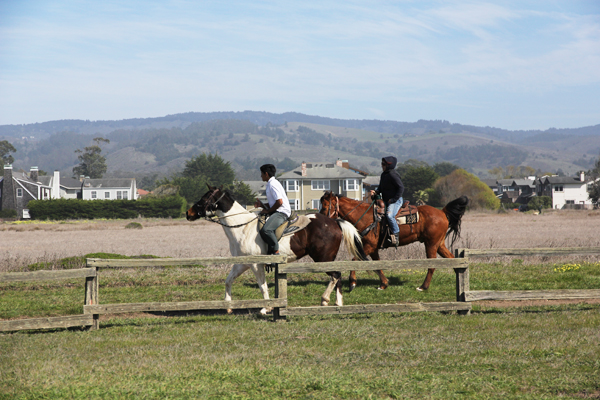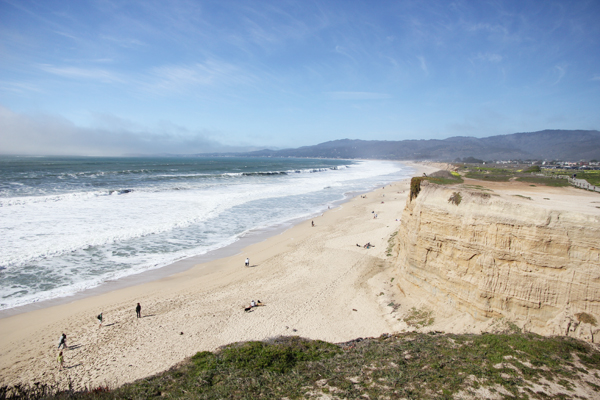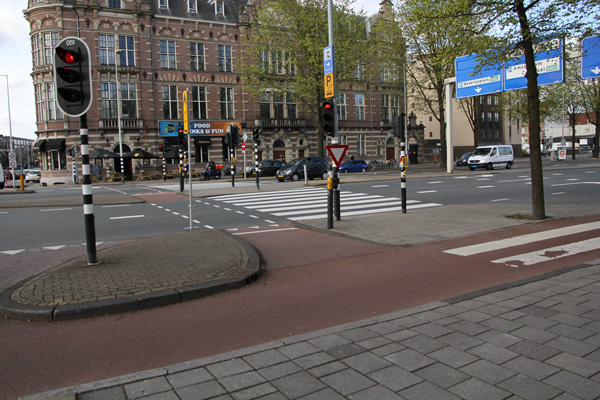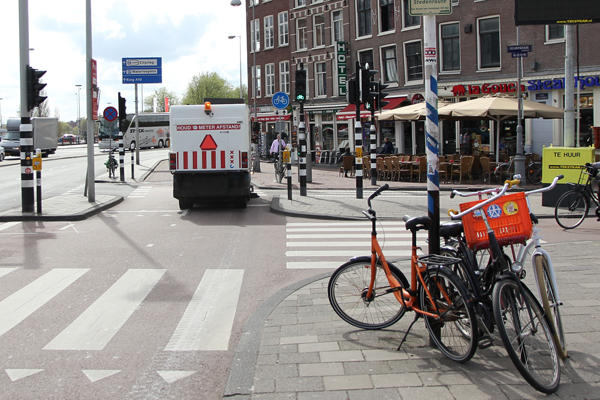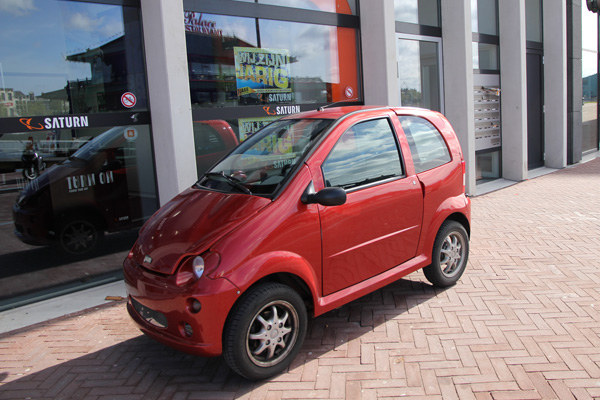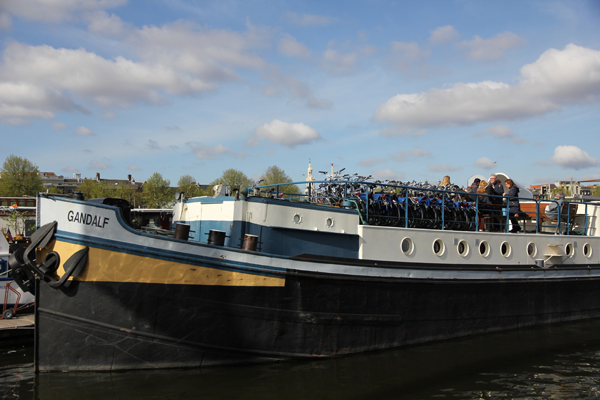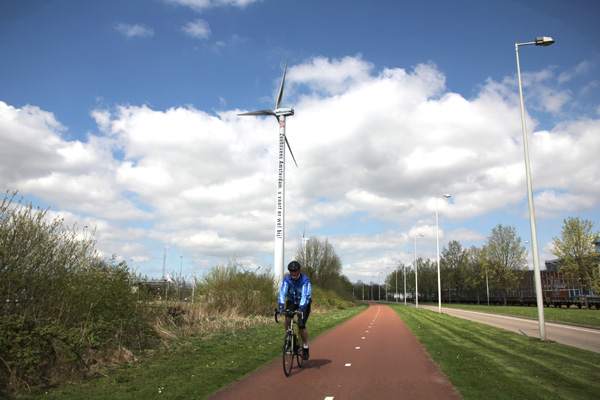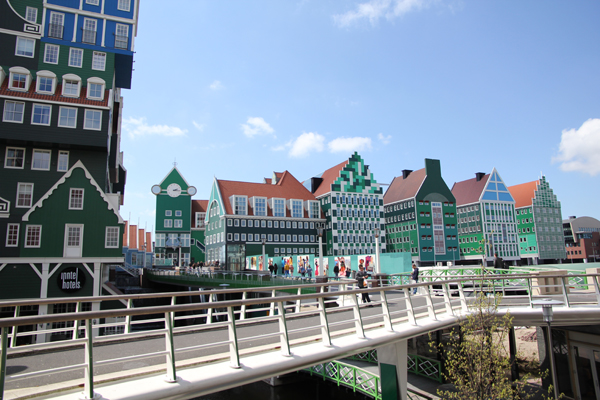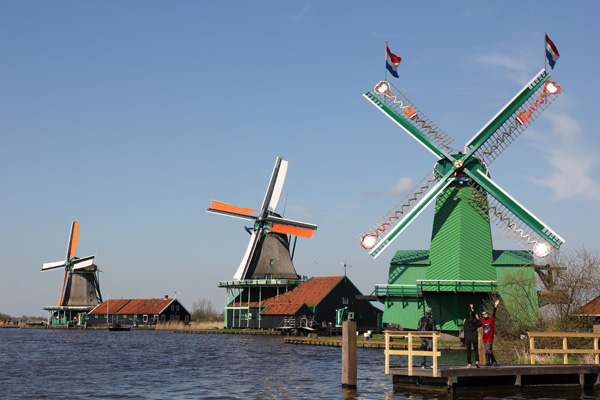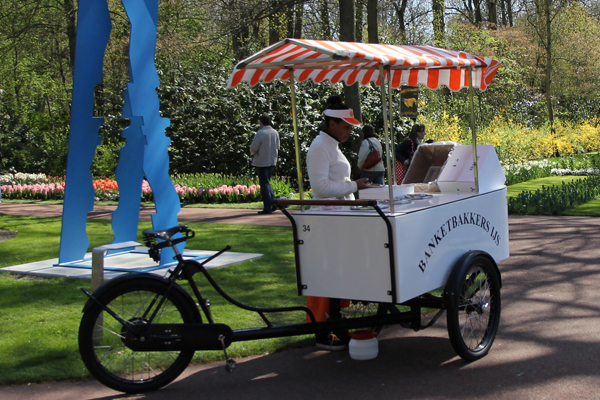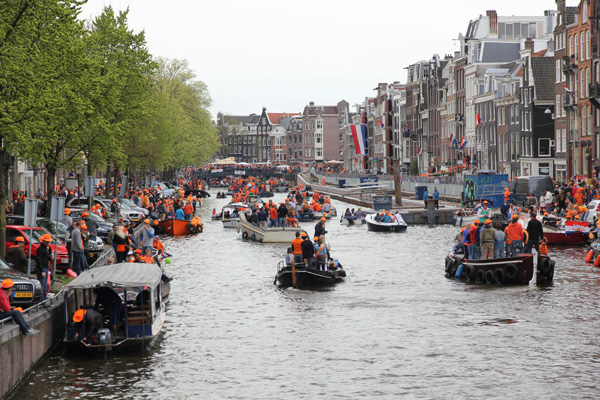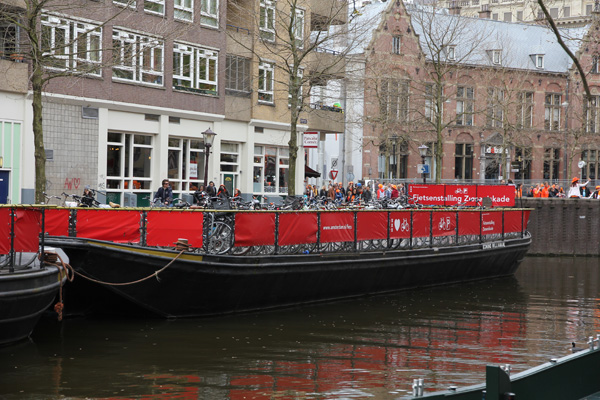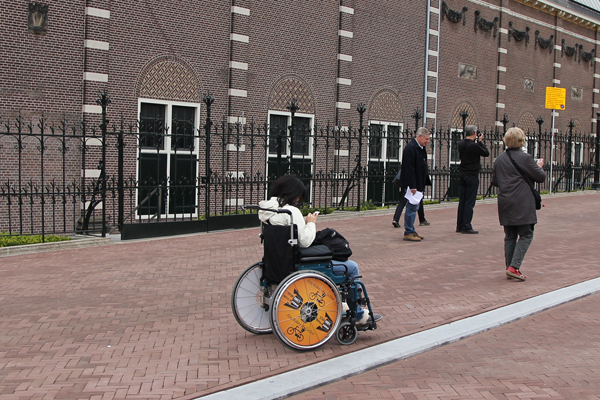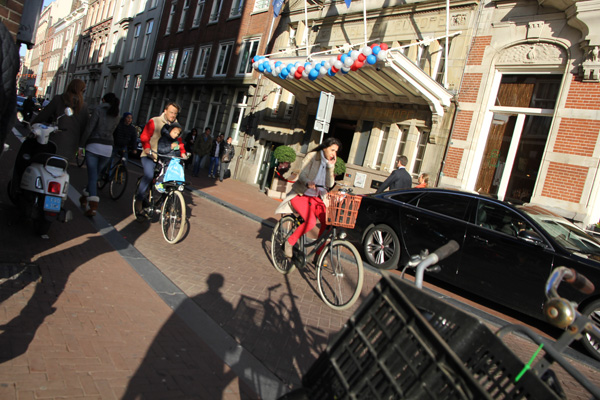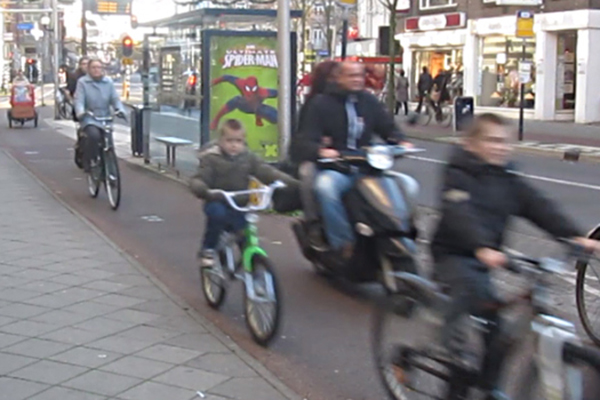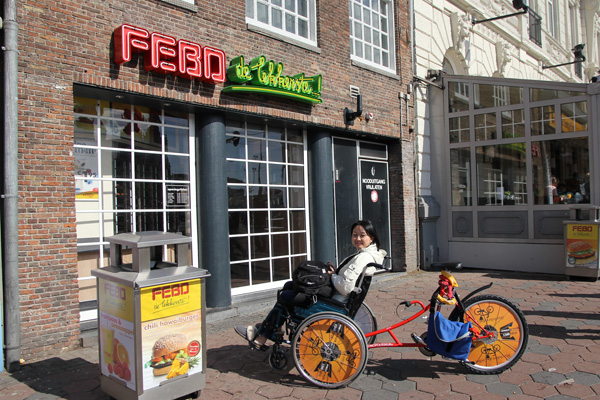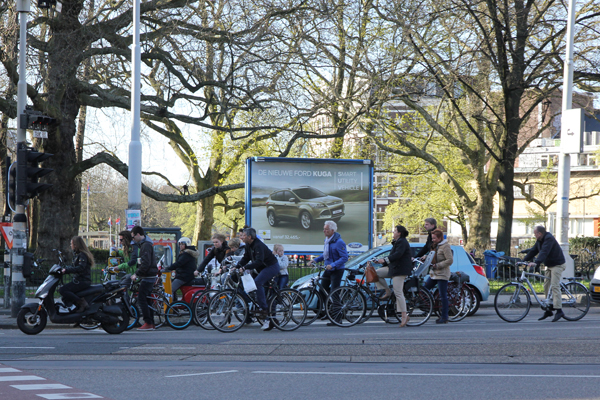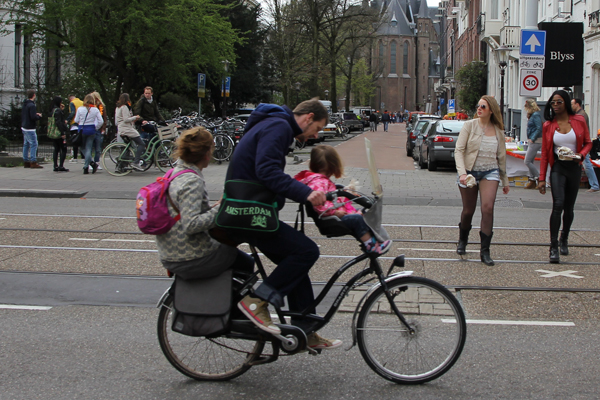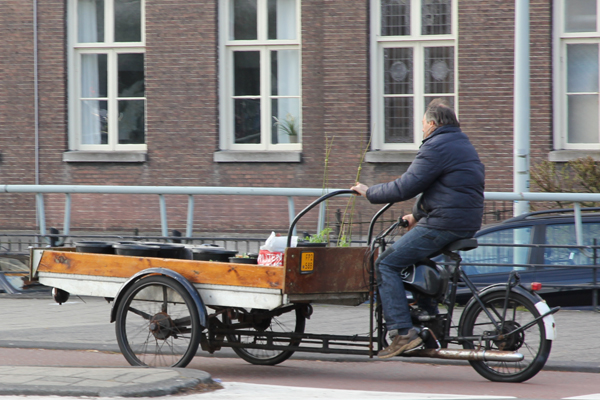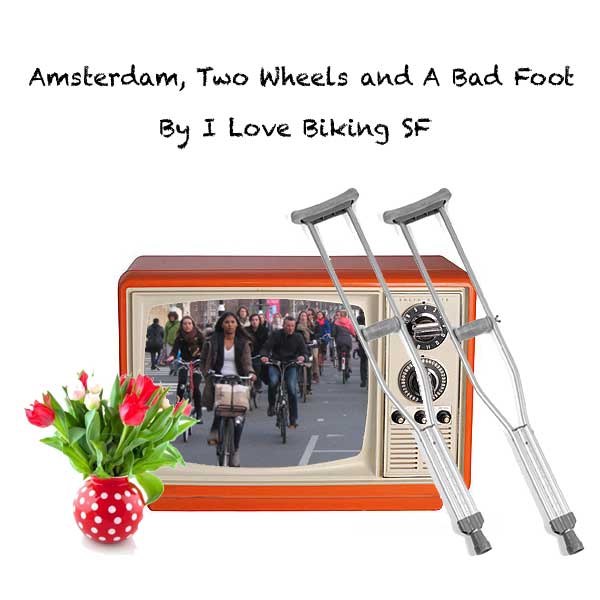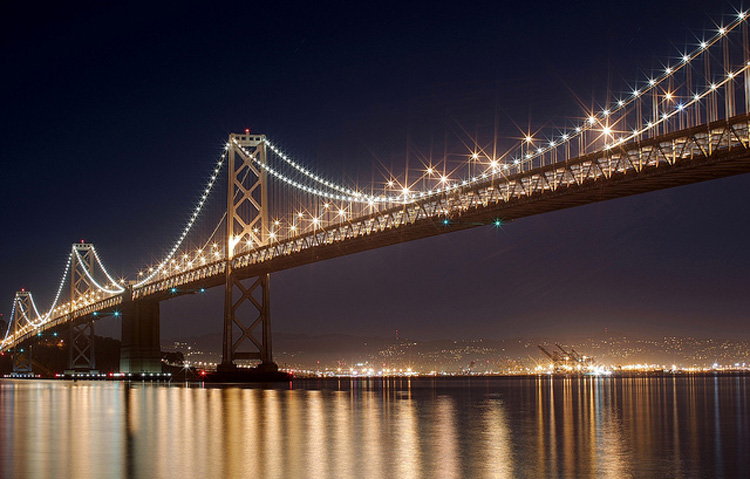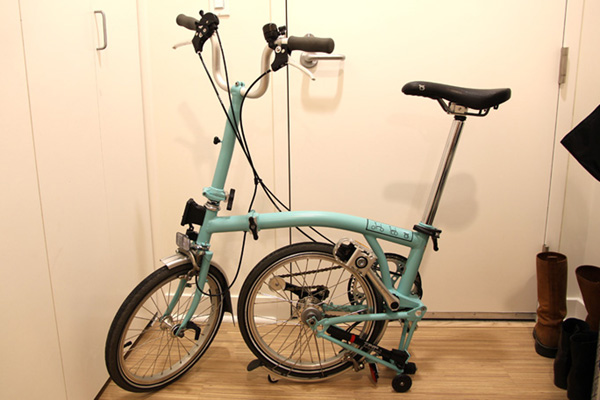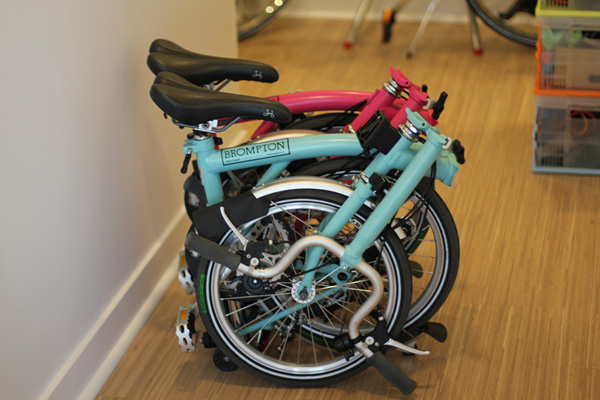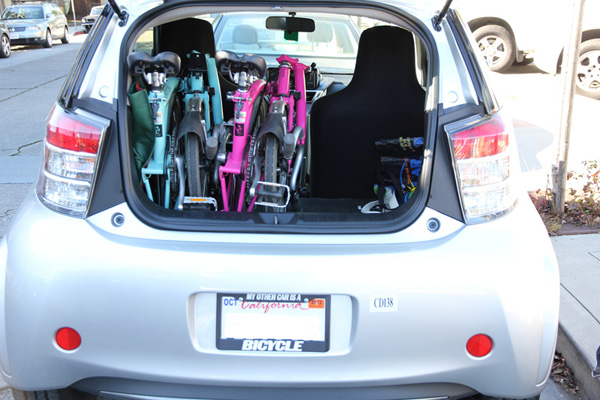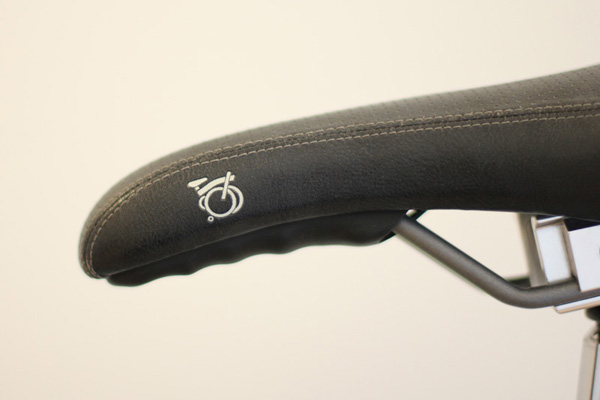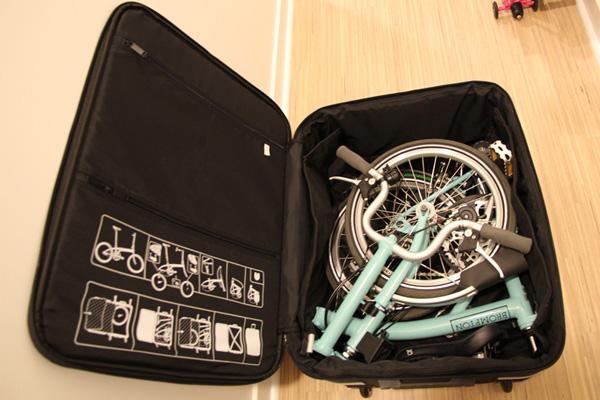Tagged: travel
What is better than biking? (continued)
Last post, I shared the first part of our experience biking in Half Moon Bay and cooking a recipe from a bicycling/camping cookbook called The Weekender by Pedal Inn. I continue here with the second part.
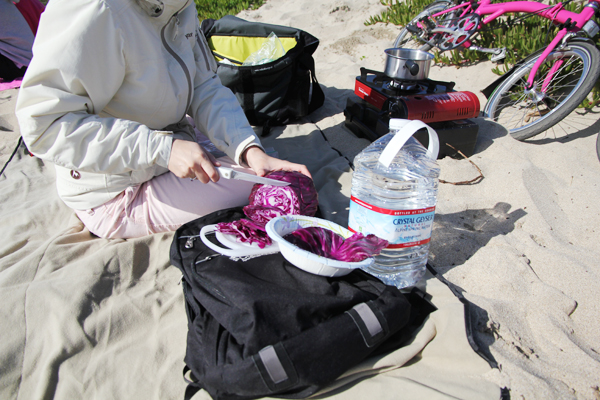
I cut the red cabbage on top of a small cutting board on top of my backpack! The Pedal Inn folks might have laughed at me if they saw. =)
So, what happened to that pot of cabbage?
Sadly, for our stomaches, nothing!
Because of the strong and cold winds, the water could not get to a temperature hot enough to boil. The wind kept minimizing the flames from the propane stove. So I could not boil the shredded cabbage and when it had come time to sautee it in the pan, I surely wouldn’t have been able to. The cabbage was an essential part of the Eggs Benedict recipe- the delightfully poached eggs were to sit upon a savory bed of sautéed red cabbage with onions and garlic, topped with creme fraiche and served with slices of hearty bread. We tried cracking an egg into the pot to see if it would cook and it never did.
While we were still waiting for the pot to boil, a little chubby boy was walking by on the sand and when he saw our pot he exclaimed, “That’s cool!” In my head, I was like, “You have no idea, kid!” Chris said he got really appetized waiting for the pot to boil and had been looking forward to the meal. So we were both disappointed when we couldn’t get the stove hot enough to cook the food.
I was sure the dish would have been delicious if we had been able to cook it. The windy and cold weather did not cooperate with our plans, and we later found out that the first part of the year is not really the best time to visit Half Moon Bay. It is warmer and less windy during the latter half of the year. Also, I used a propane stove which I think is designed more for indoor use. They make stoves specifically for camping and those burn alcohol. Maybe that could have withstood the wind better.
Defeated, we packed up our stuff, shook the sand out of our bikes and then headed home. But in my head, I was determined to try this dish. I had to know how it tasted! I was going to try again, but this time in my own kitchen. I still had the unopened pack of creme fraiche. I had the carton of eggs we bought and there was still a lot of red cabbage left.
One morning soon after our excursion, I made the recipe at home and it came out fantastic! The flavors blended wonderfully and the dish seemed fresh and healthy. I don’t have a lot of experience poaching eggs so I kind of overdid them, but nevertheless, when I ate them with creme fraiche, it was heaven. I could imagine how much more wonderful it would have been to eat this dish at Half Moon Bay on a good day, with the sights of the sea, sky, and cliffs.
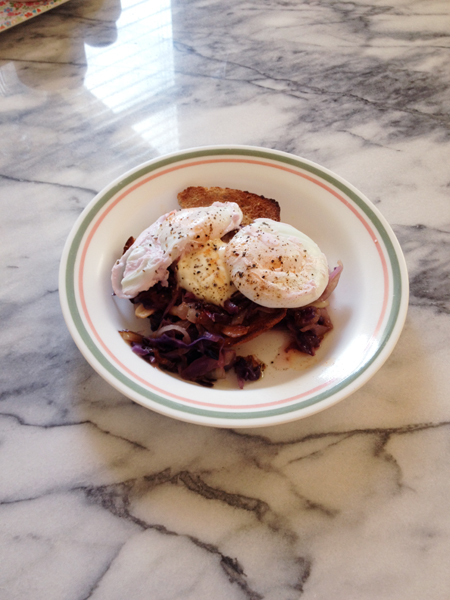
I didn’t make the poached eggs well, but the dish still came out delicious especially because of the creme fraiche.
Now, about The Weekender cookbook, I really liked and learned many things from it and the whole experience. I now use the combo of creme fraiche with poached eggs on a regular basis- yum. Even though I don’t personally feel cut out for camping and cooking outdoors, I think the recipes are still great for cooking at home. I think they really represent the flavors of California and Bay Area cuisine. For anyone who loves the outdoors, camping, biking, and cooking or is curious to try, I think this cookbook is the perfect resource for you. It will challenge you a bit which is what I think is part of what makes the outdoors exciting. Challenging yourself to go to new places, climb a hill or mountain (with your two feet or two wheels), and then achieving that great reward at the end- a sense of accomplishment, amazing and breathtaking views, and renewed sense of wonder about nature and the world.
As it pertains more to biking, it is also a great reflection of the biking experience. In a previous post titled Exploring A City by Bicycle (a love letter to urban biking), I wrote about how biking is a very sensory experience where almost all your senses are engaged. When biking, you see many things with your eyes, you hear and smell the world around you, and you feel the breeze on your skin. The one sense missing is that of taste. This cookbook, The Weekender, fills in that last piece bringing the biking experience and taste together to create a complete experience for all your senses. So I believe that with this book, and for those who have the initiative and drive for adventure (and good eats), the rewards reaped will be like a “sweet song that you [and your tastebuds] will remember for as long as you can”.
Pedal Inn Weekender Cookbook
Currently $19.95 USD for the print edition at their online store
THE PEDAL INN WEEKENDER INCLUDES:
♥ 5 Weekender menus, inspired by 5 enticing Bay Area bike camping destinations
♥ 25 camp-tested recipes for two hungry cyclists
♥ Meal plans ideal for the overnight jaunt or for the savvy home cook
♥ Dishes designed for flavor & freshness first but with an eye towards ease and efficiency
♥ Tips, insights, and inspiration helpful for new and experienced bike campers alike
♥ Weather-resistant, tour-worthy vinyl pouch, fit for a cycling jersey or handlebar mount
There is also an e-book version for $7.95
What is better than biking?
Answer: Biking and eating!
In this post, I share our experience biking in Half Moon Bay, California and cooking a recipe from The Pedal Inn Weekender cookbook right on the beach. If you love biking and eating/cooking, then read on!
A few years ago, on one of our memorable nights out biking with the SF Bike Party at a rest stop upon a hill taking in the sights of the beautiful city, someone handed us a yellow matchbox with an illustration of a crest on it with “The Pedal Inn” written across the top and an image of two people wearing outdoor gear having a picnic beside their bicycles. On the back it read, “For lovers of adventure and good eating”. I was curious what that was and the woman who handed it to me told me it was a cookbook. I was intrigued because I love biking (that’s the name of our blog) and I love eating and cooking too and here was a couple that had combined these things into a single concept that they could share with others- a cookbook and guide to biking/cooking/camping. After visiting their website at www.pedalinn.com I said to myself, I have to try this one day!
Not too long ago, I decided it was a good time to try out the cookbook. Thanks to Nick and Lindy, the authors of the cookbook, I was able to get a copy of it for myself. When it came in the mail and I unwrapped it, I saw it was beautifully put together. Inside the plastic pouch, was an assortment of booklets/pamphlets. The main book had Weekender written across the front and was nicely illustrated inside and out. The others were more like simple folded pamphlets with recipes in them and were designed to be easy to travel with. Each recipe pamphlet had the name of a great Bay Area biking locale such as China Camp, Lake Del Valle, and Mount Diablo to name a few and the corresponding recipes that matched the theme of each place. The writing was a joy to read and it began to dispel the mysteries of camping/biking/cooking to me.
You see, although I love biking, I have very little experience in the long-distance touring sort of rides. Also, I have only camped outside maybe once or twice in my life when I was young and my much older sisters took care of everything. They packed the tents and brought all the provisions. I still remember the yummy baked bananas my sister made over the grill using foil but I didn’t really know how it all came together, just that it tasted unbelievably good (something about eating food in the great outdoors enhances it).
So as I perused these guides with names of places that called out to the adventurous side of me, a feeling of anxiety began to set in. After cooking for five nights a week for the past seven years, I can now say I know how to cook with complete confidence. So perhaps it was because I know how to cook that seeing the recipes made me break into a sweat. Because of my experience, I could quickly see this wasn’t just a cookbook about throwing together some Chex Mix to bring with you onto the trail. This was, you could say, gourmet stuff and what made it challenging was picturing myself trying to cook this stuff not in a kitchen in the sterile comfort of my home, but outdoors in an unpredictable and variable environment. I was sure the efforts would probably have been worth it once we tasted the finished dishes, but getting to that point was the hard part.
As I began to plan the trip, I was thinking in my head, “How the heck can I do this? I can’t do this. No, I CAN do this. No, I can’t! Yes, I can! And finally, “Okay, I just won’t camp out overnight and even though I don’t know how I am going to cook this stuff outside, I am going to do it anyway! I will do this whether I can or not.”
Fast forward two weeks later, and it is the morning on a fine Sunday. Chris and I are shuffling around the house trying to pack stuff. I grab our propane stove we have used many times for Chinese hot pot. I grab some spatulas, spoons, and pour some olive oil into a small plastic case. I didn’t pack everything I needed because the idea was that we’d stop by a market along the road during our bike ride to buy fresh ingredients. That would be part of the Pedal Inn experience.
Our destination was Half Moon Bay, a place where we would ride along a path overlooking the sea and then camp out on the beach for the afternoon. The recipe pamphlet for Half Moon Bay was stuffed into our Brompton bag pocket, and we were off in our tiny car with the bikes and cargo stuffed in the back.
When we got to Half Moon Bay, we first stopped into a market on Main Street. We found what we needed there and even a fresh pack of creme fraiche. We were going to make Pedal Inn’s version of Eggs Benedict. They use creme fraiche instead of Hollandaise sauce. That was just the breakfast recipe and the only one I felt confident enough to try. They also had a recipe for dinner and dessert. Dinner was Fish Tacos with Pom-Persimmon Salsa and dessert was Blackberry “Shortcake” in origami folded cups. Sounds delicious, doesn’t it? These are also the perfect recipes for Half Moon Bay, a place by the sea that is influenced by Mexican culture due to the migrant workers that live in the area and who work on the local farms.
We then rode our bikes along the path by the beach and it was a picturesque and lovely experience. The view was amazing and the waves crashing onto the beach were furious. We saw people riding horses and many people walking along the path. People were sitting out on the beach down below. I had the stove in a backpack on my back along with all the ingredients. It was getting kind of heavy. Having panniers would have helped a lot with that.
After riding around a bit, we went down to the beach and opened up our picnic blanket. We set our bikes on top of some succulent plants so that less sand would get into the chains. We set up the stove and the wind was blowing so hard, I was afraid that we would not be able to get the fire lit. But it was lit. We poured water into the pot and waited for the water to boil. I cut the red cabbage on a small cutting board on top of my backpack. I added the cabbage to the pot and then…
This story is getting long so check back next post for what happened to the pot of cabbage!
To be continued…
Continue reading here!
Exploring A City by Bicycle
When you are exploring a city on the seat of a bicycle, you are making a deeper connection with it. You are engaging more of your sensory faculties and your whole body is in motion. With every pedal forward, you are opening yourself up to what is around you, making yourself vulnerable but also much freer. When you are on a bicycle, there is nothing between you and the world around you except a space of air. There is no glass, perfumed interior, no controlled climate which can keep you comfortably contained. The raw elements of the world reach you. But you can be more quick and nimble, and you can choose to go at your own pace- you decide. Almost all of your senses are engaged. With your eyes, you can see wonderful sights- from the shape of a landmark set against the sky, to the reaches of the horizon. You can see humanity around you and the expressions on people’s faces. With your ears you can hear the soundtrack of the world- of laughter and sneezes and conversation, set amidst the medley of city noises. With your nose you can smell the scents of not just exhaust and refuse, but also of trees, flowers, and grass, Chanel perfume, and bread being baked. Most wonderfully is the experience of feeling the wind on your skin and in your hair. Sometimes the air is crisp, sometimes more humid and warm, but always you feel something. This creates a symphony of sensory input that feeds into your body, mind, and imagination. The music of this chorus is like a sweet song that you will remember for as long as you can. It is one of the most delightful and simplest of joys- riding a bicycle in the city and especially one that you love.
2 Wheels and A Bad Foot in Amsterdam – Part 3
In parts 1 and 2 of our series on Amsterdam, we had a wheelchair bike as our vehicle of transport. After pedaling Nellie around on it for a few days, I realized that it wouldn’t be good for very long distance trips since it can get very tiring. So, we also rented an electric-assisted Bakfiets cargo bike thinking that it would be better, but realized that the power still wasn’t enough to go a long distance with an adult sitting inside. Furthermore, as you can see in the image below, the depth of the seating area is too short for an adult to sit on comfortably. I was planning on using it to go 22 miles (35 km) one way to Keukenhof Tulip Park which is about a 2 hours ride (in my case, it’s probably 3 hours), but I chickened out. Either I will become too exhausted or Nellie’s butt would be in flames, so I didn’t want to take that chance. So we had to sell out on our bike experience and rent a car just for that day.
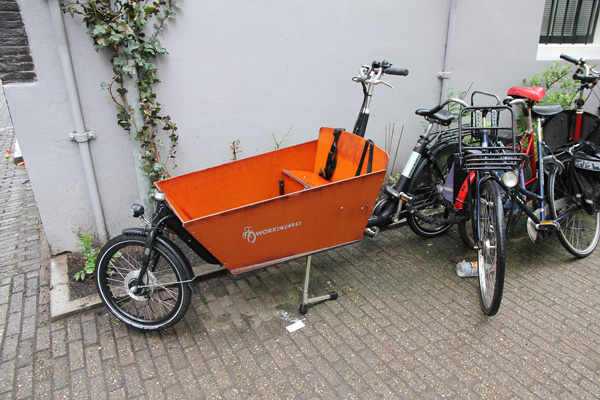
Electric-assisted Bakfiets was too heavy for a long distance ride and has an uncomfortable seating area for an adult.
The reason why we entertained the idea of riding all the way out to the Keukenhof Tulip Park in the first place was that we had a positive experience when we we rode out to Zaanse Schans to see some Dutch windmills the other day. It was such a great experience getting out of the busy city center where the wheelchair bike was rolling on bumpy paved roads and transitioning to smooth paved roads in open and modern spaces.
When we left the city center, wow, it was bike utopia! Although we were still within the periphery of Amsterdam city, we were no longer in the old city core. The roads were smooth and separated bike paths went in every direction you would need or want to go. Amsterdam is indeed number one in bike infrastructure along with many other Dutch cities. If you want great infrastructure for cycling, one should look to the Dutch for the model. I have been to a handful of bike-friendly cities, and none of them come close to Amsterdam. The cycle tracks are very wide with wide buffers from the streets, and stretch continuously for miles, and you can get from point A to B and C without feeling unsafe. Traffic signs/signals for bicycles are everywhere and I felt that the priority of bicyclists exceeds that of motorists. Every time I was at a red traffic signal for bicycles and a button was there for me to press, it wasn’t long before the light turned green for me. One thing I noticed about how they did auto traffic calming was that on streets that have two lanes, where they become one lane, the left lane merges into the “slower” right lane. This slows traffic down as opposed to the States where cars in right lanes usually have to merge into the “faster” left lane.
The paths and sidewalks were very wide with larger brick tiles which reduced the bumpiness when rolling over them making it much more comfortable for Nellie on the wheelchair bike. The larger brick tiles alternate with large sections of smooth pavement. The paths are so wide that you can ride at least 2 abreast. This allows for conversational cycling (having a conversation with a companion while riding your bikes side by side) which makes cycling even more enjoyable. Some streets have two cycle tracks that are bi-directional. Pretty crazy, huh? How can any street that has two cycle tracks also have two way traffic? Well, just reduce car usage by increasing bike usage, so you have more room for cycle paths. Voila!
Notice the red pavement in the photo below- that is colored asphalt, not just asphalt that has been painted like what we have in San Francisco. Because it is colored asphalt instead of paint on asphalt, it is less slippery during the wet season unlike the slippery green paint on our SF bikeways.
We saw tiny vehicles such as the Canta LX that are allowed on the cycle tracks and are small enough to legally park on sidewalks (I don’t even think you need a driver’s license to drive one!). They aren’t actually cars but are more like covered scooters. They can go up to 28 mph (45 km/h) and a folded wheelchair can fit in the rear. They are great for the elderly and disabled. We may rent this next time so Nellie can finally take control of the wheels. =) We also saw a handful of mobility assisted scooters on the cycle tracks as well.
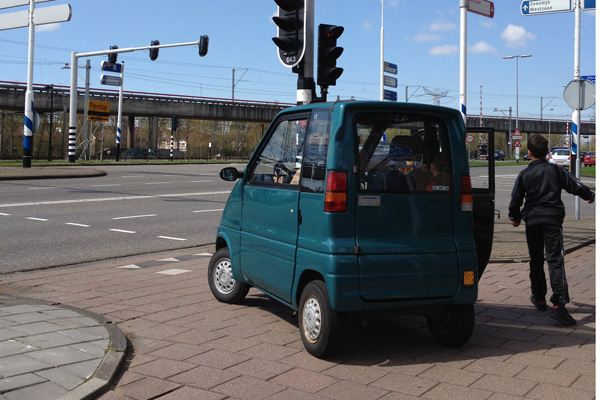
Driver in the Canta car dropping off her child. Notice that it is on the cycle track and not in the street.
With 25% of the Netherlands below sea level, it just makes sense to have bikes on boats too (see photo below)- or the Dutch just really like bikes. Is it a bike tour or boat tour? Hmm…
When we got even further out and left the city altogether, I pedaled Nellie on the wheelchair bike on this beautiful separated bike path for 14 uninterrupted miles (23 km). Well, the journey was almost uninterrupted except at one point where we took a ferry to the other side (the ferry was absolutely free!). The wide separation between the cycle tracks and streets made cycling peaceful and you were away from car exhausts. The paths were lined with trees for much of the way which added to the serene experience. That is how riding a bike should be. It was the best riding experience I ever had in my cycling career even considering I was riding on a wheelchair bike. Nellie even said that she didn’t think about her injured foot for a moment.
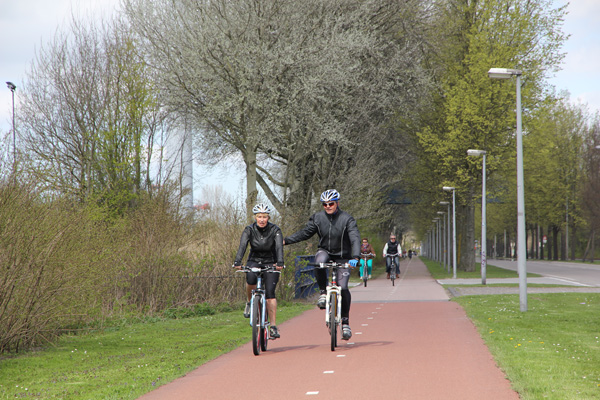
Wide and smooth pavement stretches for miles. Notice the wide buffer between street and cycle track.
On the way to Zaanse Schans, it was breathtaking to see these wind turbines on the sides of the cycle track. One of the main reasons why I ride is because of environmental reasons so those wind turbines really stood out to me and affected me on a personal level. We also saw many performance cyclists in their spandex and gears. It must be awesome to ride fast for hours on these very long, and “open road” bikeways.
On our last full day in Amsterdam, it was Queen’s Day. For most people, as a visitor or even a local, it’s wonderful to experience Queen’s Day. This Queen’s Day was especially important because Queen Beatrix abdicated her throne for her son, now King Willem-Alexander. The local population of Amsterdam is around 820,000 and on the days leading up to Queen’s Day, the population typically doubles with all the celebrators. Most of the population congregates in the city center. The entire city center is generally closed off to traffic on that particular day. So you can imagine that it was very crowded. Nellie decided to stay in for that day knowing that maneuvering for her would be very difficult, but I got out and about to observe some Dutch culture. I didn’t know that the Dutch were such partiers and loved their Queen.
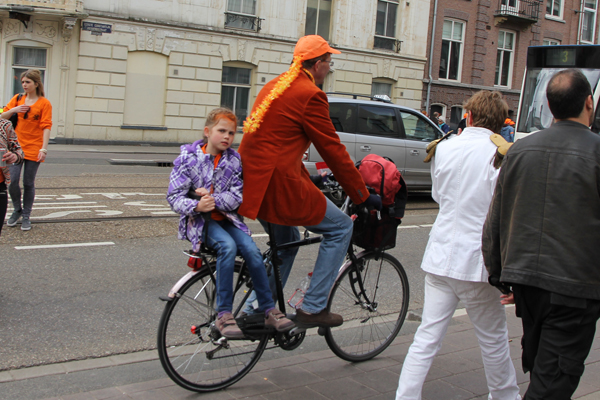
Here was this girl and her father dressed for Queen’s Day. She looked very comfortable. Orange is the color of the Dutch royal family.
With 800,000 more visitors coming into the city, of course the city is already prepared to accomodate all these bikes. The ample space from the dozens of water canals makes a good place for bike parking. There were three of these boats filled with bikes on this one canal I saw. Bicycles rule in Amsterdam!
To conclude our Amsterdam trip, it was just too difficult to maneuver around in the city center on a wheelchair bike especially during a crowded holiday. I can imagine it would be nice for those on regular bikes though because of all the historic buildings, canals, and scenery. We did enjoy every bit of the experience when we left the city center. Overall, riding a bike in the Netherlands is truly a joyful cycling experience and I could understand if anyone expatriated to the Netherlands solely for bicycling. I know of a couple of people who did.
Thank you to the Netherlands from the bottom of every cyclist’s heart for making it a great bicycling country for all of us to see and try to emulate and showing that a society built around bicycles can be achieved.
Related posts:
2 Wheels and A Bad Foot in Amsterdam – Part 2
2 Wheels and A Bad Foot in Amsterdam – Part 1
The Netherlands in 30 Photos – What you’ll see if you ride a bike in the Netherlands
2 Wheels and A Bad Foot in Amsterdam – Part 2

A water canal filled with swans. How many swans can you count in this picture? Answer at the bottom of this post.
The primary way of getting around Amsterdam for Nellie was not her own two feet but our trusty wheelchair bike from StarBikes Rental as discussed in an earlier post. The wheelchair bike was very helpful, but there were two issues we had with it.
The first issue was that the ride was bumpy and uncomfortable for Nellie on the brick paved roads which are ubiquitous in Amsterdam’s old city center. She could feel every little bump and irregularly in the ground as we rolled along and because her foot was already sensitive, the shaking and sudden jerks would hurt her foot. Whenever we hit a bump or dip, she had to be sure to lift her foot in time so as to soften the impact, but it was still unpleasant and tiresome for her. I had to ride very slowly and carefully trying to avoid potential problem areas. The rocky ride could’ve been due in large part to the skinniness of the wheelchair tires. I think they should have used fat tires for the wheels like those seen on Dutch bikes to better absorb shocks. The bumpiness may not be such a big issue for other wheelchair bike users if they don’t have any aches and pains on their body and can tolerate a little shaking.
The second issue was that when it rained, Nellie’s legs and feet got wet. The wheels do not have fenders and it is hard to cover the legs and feet when it rains. Nellie used an umbrella but it didn’t reach her legs and the umbrella kind of blocked my view as I was pedaling. Also, my legs would have gotten wet too if I hadn’t worn rain pants. If you’re going to use a wheelchair bike when there is a good chance of rain, which the Netherlands has plenty of, be sure the wheelchair rider is at least wearing waterproof footwear and waterproof pants. It can get pretty cold once the pants get wet. There is also a waterproof cover for the legs that comes with the wheelchair bike but we didn’t bring it with us. It didn’t look inviting to us to use it for some reason.
Amsterdam’s old city center is not made for people with a disability, particularly people with limited mobility. We stayed in Nieuwmarkt square in the city center which is about 800 years old. When a place is that old, the buildings and its infrastructure are not going to be conducive for people on wheelchairs. Apparently, wheelchairs didn’t exist back then and of course, the Dutch have done a good job in preserving the original historic look of the place. So, the town has narrow sidewalks which often get crowded and force people to walk in the streets (see photo below). Also, shops and stores have very narrow doorways that wheelchairs can’t fit through and often have steps instead of a ramp. The small brick pavement on both the streets and sidewalks makes it harder to roll a wheelchair around.
Not only are the sidewalks too narrow to push a wheelchair on, but you also have bicycles, scooters and even cars parking on them creating a veritable obstacle course. If you take the narrow street which only fits one car’s width, you would have to maneuver to the side whenever cars drive through which happens occasionally. Rolling a wheelchair back onto the sidewalk is difficult because on-ramp curbs are not placed throughout. There are some streets that are level with the sidewalk but they are not that common. I think Amsterdam’s urban planning officials should look into restricting private car access (taxis and delivery vehicles are okay) into these small city center streets using a filtered permeability design like how Strasbourg in France has in their city center. I did see that they restricted car access on some streets at certain times of the day but I don’t think that’s enough. Not only is this better for wheelchair users, but it creates a less chaotic environment for regular bicyclists and pedestrians which crowd the city center. Closing down the old city center to cars is actually a very common thing many European cities do which Amsterdam surprisingly has not done.
In addition, we noticed gas-powered mopeds using the same cycle tracks as bikes. They are fast, loud, and smelly and we didn’t like them one bit. We thought they were quite menacing and have heard that there are many locals who think so too. Many of them seemed to be going faster than the 20 mph (30 km/h) posted speed limit and we’ve heard that many of them have had their speed restrictor removed. Not only do they speed but they also make a loud racket and from their 2 stroke engines, leave a plume of noxious and unpleasant fumes in their wake. Often one would come zooming by suddenly and it would scare the bejesus out of Nellie, she almost got up and started walking. In the States, we have to deal with absurd and narrow bike lanes (or the lack thereof) that bring us in closer proximity to fast moving cars and plentiful opportunities for car-dooring. So I know that as a cyclist, I would definitely get annoyed by them if they were riding on cycle tracks here. According to Bicycle Dutch, there has been an increase by 3 fold in the number of mopeds on cycle tracks in the past five years in Amsterdam and 94% of them speed. I heard from Pete Jordan and Amsterdamize that Amsterdam is working on legislation to ban mopeds from cycle tracks.
So far, it probably sounds like the bike ride in the city center was a lot of trouble especially for Nellie, but there were many positive highlights. One thing which brought a smile to Nellie’s face was enjoying some goodies from the Dutch fast food chain FEBO. We recognized FEBO from Anthony Bourdain’s Layover show, so we decided to give it a try. They make great biking food because of their convenient grab and go vending machines. You simply walk up to the food of your choice displayed inside the vending machine, insert your coins into the slot, and then open the door and grab your food. Despite it being a fast food chain, the quality of their food was actually pretty good and blows McDonald’s away. They have all these hot and tasty croquettes filled with different stuffings like beef and curry, burgers and chicken sandwiches. They were delicious. No cashier to deal with. Just your hungry stomach and the machine. It was one of our most favorite things to eat there.
Another thing we noticed on a positive note was that there was a certain fluidity to the way cyclists, pedestrians, and motorists maneuver around each other at intersections within the city center. See the video below. We observed that there were no stop signs so everyone whether they were in a car, on foot, or on bike would yield to one another and they had to share the road. They did all this without making a fuss. This sort of set up would never happen in the States. If you were to ride on the sidewalk, pedestrians would bark at you. If you were to ride in the car lane, motorists would honk at you to get off the road. But in Amsterdam, I noticed that this system of common sense and courtesy between pedestrians, cyclists and motorists actually seems to work. This civil behavior is probably a result of the understanding they have for one another because they all have experience riding bikes as a means of transport.
Now I want to talk about how wonderful the cycling experience is outside of the town center. Even though it was a challenge biking with the wheelchair bike in the middle of old Amsterdam, biking outside the city center was utopia. In the city center, the streets and buildings are historic and like I mentioned earlier, the streets there are not so conducive for wheelchairs. Not only are they paved with bricks but they are also congested, filled with tourists (lots of tourists because it was just days before Queen’s Day, a huge national holiday and the historic abdication of Queen Beatrix), and the area can get pretty chaotic. But when you go further out, you find that the spaces open up and become more organized. That is where the true quality of the cycling infrastructure in Amsterdam becomes apparent.
How great is the cycling infrastructure in Amsterdam you might ask? Just look at the photos below. I randomly took this photo and to my surprise I caught every gender and age group in one shot at a traffic signal. That is a sign that the cycling there is comfortable for everybody, ages 8 to 80.
Cycling on Amsterdam’s paths are so safe that a mom, dad and child are not wearing helmets and riding together on a single bike. How delightful is that?!
Because the cycle tracks are away from cars, this man can take his time riding his heavy workcycle.
I will end here about our wheelchair-biking experience within Amsterdam and will cover more of our experience when we journeyed outside of Amsterdam city in our next post. Stay tuned!
Answer to the question at the beginning of the post: 13 swans!
Related posts:
2 Wheels and A Bad Foot in Amsterdam – Part 1
2 Wheels and A Bad Foot in Amsterdam – Part 3
The Netherlands in 30 Photos – What you’ll see if you ride a bike in the Netherlands
The Netherlands in 30 Photos
Some of the things you will see if you ride a bike in the Netherlands…
 |
 |
 |
 |
 |
 |
 |
 |
 |
 |
 |
 |
 |
 |
 |
 |
 |
 |
 |
 |
 |
 |
 |
 |
 |
 |
 |
 |
 |
 |
Photos were taken in Amsterdam, Zaandam, Zaanse Schans, and the Keukenhof Tulip Park.
See more:
Two Wheels and A Bad Foot in Amsterdam – Part 1
Two Wheels and A Bad Foot in Amsterdam – Part 2
Two Wheels and A Bad Foot in Amsterdam – Part 3
In the City of Bikes (Amsterdam) By Pete Jordan Book Reading
Bicycle Travel – Amsterdam
Hello readers,
About five months ago, Nellie and I had started planning for a trip to Amsterdam to see and experience the best bicycling city in the world for ourselves. We were planning on bringing our Brompton folding bikes with us and decided to have the courage to gate-check them this time (rather than transporting them in checked luggage) at the airport. But anything could happen in five months and indeed something did happen.
Unfortunately, Nellie injured her left foot about three weeks ago and each day that has passed hasn’t brought much improvement. She hasn’t been able to walk normally and when she does have to, she hobbles along with difficulty or she puts on an orthotic boot and uses crutches.
The days are quickly winding down until the day we are to fly out for Amsterdam so we initially thought about canceling the trip. “Nooooooo!”, was what went through my head. “Our opportunity to have the best cycling experience ever and now this is happening to us?”
Then we thought about how the cycling infrastructure is so wonderful in the Netherlands that people with disabilities are benefiting from them and getting around easily as well. So from that we decided that we could still take this trip.
First, we thought about how we could transport ourselves since Nellie cannot ride a bike or walk very much. “Cargo bike!”, we thought. We were excited at that idea since Nellie can just ride inside the cargo box while I pedal. But if we were to go to a museum or somewhere bikes are not allowed to enter, it would be a problem since Nellie can’t walk a good distance before she needs a rest and walking with crutches can get very tiring. We could request a wheelchair at the museum, but we may not always be able to get one at other places.
Then, I remembered seeing a wheelchair bike in this great video (1:14) by Bicycle Dutch. I could see myself riding it everywhere pedaling while Nellie sits on the wheelchair that is attached to the front. And did I say that the wheelchair is detachable? So that means that we can park the bike and detach the wheelchair to go inside museums and other places. How brilliant is that?! I found a bike rental shop called StarBikes Rental Amsterdam behind the Amsterdam Central train station that rents out wheelchair bikes. I quickly reserved it and we are going full steam ahead. Yes!
While we are hoping for her foot to be better by the time we leave for Amsterdam (she will eventually get better, just not in time for the trip), this experience will be interesting to see how accommodating Amsterdam will be for bicycles and people with limited mobility. From what I have learned from Bicycle Dutch’s blog, I expect that it will be a positive experience. Plus, I will still have a blast pedaling all around Amsterdam and the Netherlands with Nellie right beside me.
So, we are going to take off for Amsterdam soon and plan on sharing what we will learn with you in some future posts. While we are there, we will not post anything to this blog. But we will be actively tweeting about our observations on biking there and how Nellie is able to get around as a disabled person in Amsterdam.
You can follow our live tweets of our bicycling adventure in Amsterdam at our Twitter page here starting on April 24.
Thanks and happy pedaling even if you have a bad foot!
Update: We’re back! Read how things went in our series on Amsterdam:
Two Wheels and A Bad Foot in Amsterdam – Part 1
The Netherlands in 30 Photos – Some of the things you will see if you ride a bike in the Netherlands
5 Unusual Places To Ride A Bike
The most exciting places to ride a bike are not always the beaten paths, but the places where you wouldn’t expect a bike could even venture. Something about exploring a new place unknown to bicycles brings out the adventurous kids in us and many of these places have interesting and unique aspects to them. Here is a list of five places I am currently fantasizing about taking my two-wheels through, that may also pique your interest. Of course, not all of them are that possible to do, but it is nice to imagine that we ever could!
1. South China Mall in Dongguan, China
The Indiana Jones side of me wants to explore every forbidden temple, cave, and treasure tomb under the sun. This includes gigantic shopping malls that are built during periods of economic speculation and over-exuberance, that are mostly vacant, and that are located in countries that could throw me into jail for acting a fool. The South China Mall in Dongguan, China, the biggest mall in the world, fits this criteria perfectly. Although it was meant to be an over-the-top shopping paradise, with amusement park inside to boot, it has been 99% vacant since it opened in 2005. It has been cited as one of the prime examples of China’s emerging ghost towns- places built quickly and grandly, without a market to cater to, just to keep the economy spinning on its wheels of rapid-pace growth.
I am citing it as one of the places I’d most want to explore by bicycle. Imagine riding down those smooth and clean empty corridors lined with polished marble and granite with an eerie mall-music soundtrack playing in the background and the sound of no people around. Since it is so big with multiple floors, it would actually take some time to go from one end to the other and see everything. According to Wikipedia, “The mall has seven zones modeled on international cities, nations and regions, including Amsterdam, Paris, Rome, Venice, Egypt, the Caribbean, and California. Features include a 25 metres (82 ft) replica of the Arc de Triomphe, a replica of Venice’s St Mark’s bell tower, a 2.1 kilometres (1.3 mi) canal with gondolas, and a 553-meter indoor-outdoor roller coaster.” How cool is that?
Here is a short video about it:
How likely is it that I could ever ride through there? Not that likely. I’d be too chicken of being thrown in jail for being reckless or something. I don’t know how the laws in China work and I don’t want to find out. But who knows… If I am ever in the neighborhood and happen to end up there with my bike, I could just pretend that I thought I was in Amsterdam when I am in the Amsterdam section of the mall.
2. Detroit’s abandoned buildings

Michigan Central Station, built in 1912. Courtesy of http://superradnow.wordpress.com
We don’t have to look so far east for large-scale buildings that are empty of human beings. The city of Detroit in Michigan is one of the most widely known examples of population loss and urban decline. Once a center of automobile manufacturing in the US and world, it has lost 50% of its population since the 1950s and continues to decline.
While the paint in the South China Mall still smells relatively fresh and new, the paint in Detroit’s old warehouses and buildings have long faded and peeled away and there is little hope anything could be done to reverse it. But there is a certain romance and mystique surrounding its evolution into an urban forgotten land. Amid the rubble and crumbling walls, the artifacts and whispers of past lives are buried. It was once a place that thrived with people who lived out their lives, worked, fell in love, and raised families. It is a place currently forgotten, but not worthless.
I’d love to ride my bike through the abandoned areas on a tour of all its old warehouses and monumental buildings.

Abandoned residence. Image from http://www.telovation.com/articles/detroits-abandoned-homes.html
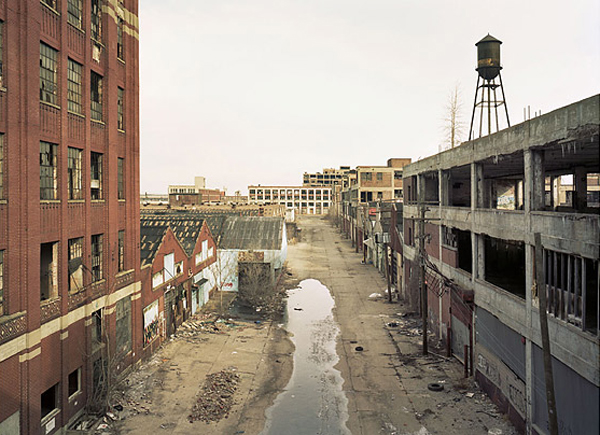
An adventure waiting to happen or a creepy place to be? Image courtesy of http://meganrolph.wordpress.com
How likely is it that I could ever ride through there? Somewhat likely. If I really wanted to make it happen, I could. I would just have to buy a plane ticket, pack my Brompton folding bike, and fly out to Detroit. But how safe would it be? I am not sure. I imagine that besides having to avoid becoming a victim of crime, I’d have to be mindful about where I am riding. The roads, sidewalks, and buildings are not maintained so there could be hazards at every turn. I should at least remember to bring a hard hat, pepper spray, and a dozen or more tire patch kits.
3. Millau Viaduct in France

Image courtesy of http://iliketowastemytime.com
If I am ever tired of looking at urban decay, I can turn my eyes towards the beautiful and stunning expanse of the Millau Viaduct in France. (Gosh, the French make everything beautiful don’t they?) Its status as the world’s tallest bridge and its incredible beauty and stunning natural setting make it the closest thing to a bridge to heaven.
Here is a video about its construction. It is 10 minutes long, so you may want to watch the beginning and skim the rest.
How likely is it that I could ever ride through there? Well, it looks like the answer to that lies in a Yahoo! Answers post:
Looks like this is the least likely to happen of all the places listed so far. Bummer! Well, maybe one day I will have a nice dream about it.
4. A rave party
Riding a bike is a lot of fun. Riding a bike in the dark with glowing lights and bumping house music is something on a whole other level. The closest thing I have experienced to that is rolling with the SF Bike Party (they are great fun by the way) but I want to take it further. Enter the Bike Rave! Imagine a gigantic dark abandoned warehouse 10 times bigger than the Titanic, laser lights and glow sticks, festive people in costumes, good vibes, and a nice sound system with Deadmau5 (or your DJ of choice) at the decks. But instead of dancing, people are riding their bikes around the neon glow fantasyland. Miraculously, there would be enough room to ride your bike without having to yield every second, and even if people are intoxicated (I personally opt for no enhancements), no one would crash. Why would it be indoors you might ask? Well, that would make for better music ambience and laser effects.
I think the closest thing to an actual bike rave is the annual desert rave known as Burning Man. Every year, people from the SF Bay Area and all over the world flock to Black Rock Desert in Nevada for a week of festivities and an “experiment in temporary community dedicated to radical self-expression and radical self-reliance” and they bring their bikes with them.
I have yet to attend my first Burning Man, but if I ever do go it would be to tour around there with my bike riding from one cool art installation to the next. Just by seeing photos and watching videos online, I am already impressed by all the ingenious, inventive, and highly creative things that people have made for the event! And of course they have lots of music too.
Here are some of the things one may be able to see when riding around on their bike at Burning Man:
Daytime:
Nighttime:
How likely is it that I could ever ride through a bike rave in the form that I am thinking? Well, I would be happy enough to ride at Burning Man. Just watching those videos above makes it look awesome! So, all I need to do is get a group of friends together, buy some $380 tickets (yes, they are indeed $380 per ticket + fees), get my bike and camera ready, and I am good to go.
5. Bay Bridge in San Francisco
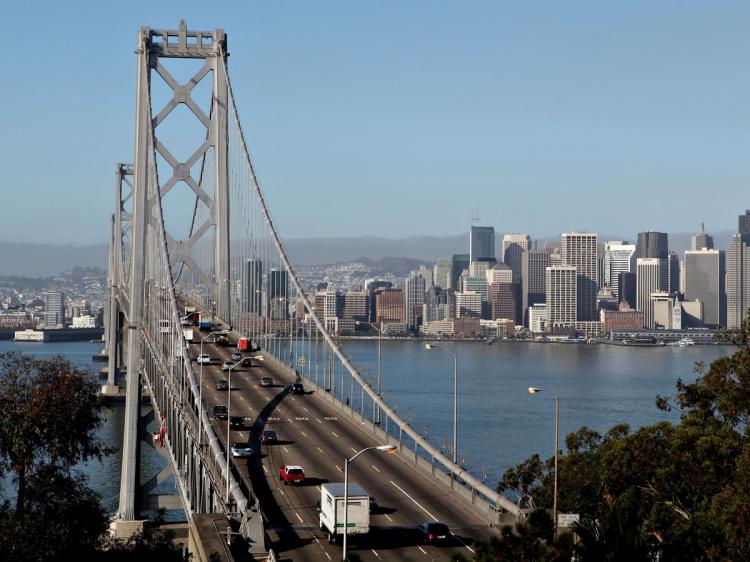
Image courtesy of http://www.theepochtimes.com
You know what is going to make me and all the SF cyclists rave party like its 1999? If they ever get around to building bicycle/pedestrian paths on the western span of the Bay Bridge (there are only bike paths on the new eastern section of the Bay Bridge) finally connecting San Francisco and the East Bay. The city has been looking at this idea for some time, but the high price tag gives everyone sticker shock. But the longer we wait, the more expensive it is going to be. Who knows if this will ever be built, but in my book it is a no brainer. The Golden Gate Bridge already has its own ped and bike paths, but the ones on the Bay Bridge would be even more important to people’s daily lives as it connects two vibrant and important economic centers and will probably be heavily used for commuting as well as recreation. Oakland is often the first place people who have been priced out of SF look for their next house or apartment and Oakland has its own funky and interesting creative ecosystem. Even though this is number five on this list, it is number one in my heart.
How about taking a bicycle vacation to these great biking cities? Read more:
Brompton Folding Bikes Review
I would like to review our Brompton folding bikes because I think folding bikes can meet most bicyclist’s needs. Many people don’t consider purchasing folding bikes because they are small, awkward-looking, may have an uncomfortable ride, or can be perceived as expensive. Although my first bike was not a folding one, I can tell you after owning one that it is the most versatile and well-rounded bike that I own. I use it for almost everything except for very long distance rides.
Folding bikes make commuting on transit and traveling much more convenient. In San Francisco, the MUNI light rail does not allow bikes at any time and BART only allows partial access. This is because a regular-sized bike usually takes the space of 2-4 people, so to make space for the greatest number of people bikes are not allowed. Also, carrying your bike on your shoulder, down the narrow escalator and through the turnstile to board the transit car is just too cumbersome. Elevators are crammed and slow and far too few. So, using a folding bike is a great way to bring your bike with you onto transit since you can fold it up and bring it on any transit line, even those that restrict full-sized bikes. Just make sure to fold it before you get on.
When we traveled to Copenhagen, we planned on using their bike share system to get around and did not realize how difficult it would be for us to do so. Although it’s been called the bike capital of the world alongside Amsterdam, their bike share program City Bikes was not very good. I don’t fault them for that though because their bike share came out 18 years ago and every Dane already has his/her own bike so the system is old and there is little need to improve it very much. The Danish are very tall people and so all of their bike shares are for tall people. Nellie could not find a single bike share she could fit on, even when adjusting the seats all the way down. Also, the bike shares were very heavy with only one speed. They did not come with locks and the social agreement there seems to be if you see one laying around, just grab it even if someone is already using it and is just setting it aside for a second. My bike share was taken from me when I wasn’t looking twice. So then, we tried renting bikes from our hotel, and their bikes still didn’t fit Nellie either. We asked for a child’s bike but it was too small. Eventually, we did find a bike rental shop but we had already wasted so much time. We told ourselves that the next time we travel, we are going to bring our own bikes!
Our criteria for folding bikes are that they have to be compact, light, and have the ride-ability of a full-sized bicycle. I want compactness so that they can fit through the airport scanner, light enough to carry them from check-in-counter to gate-check, and they have to have a comfortable ride. I read many positive testimonials about Brompton folding bikes. They have been handmade in London since 1981. They have received numerous awards such as Bike of the Year in 1996, Award for Innovation, and Bike Biz Brand of the Year in 2010. There was one blog, The Path Less Pedaled, where Russ and Laura reported on their tour around the country on Brompton folding bikes. I thought that if this couple could endure 5,000 miles (8046 km) on them, these folders must be downright awesome! So, when we went to Portland for another bicycling adventure, we paid a visit to Clever Cycles, an authorized dealership for Bromptons. We went there because they have a full array of Bromptons in stock, and Portland doesn’t have sales tax! We bought both of our folding bikes from them with travel cases to boot. The great thing about Brompton folders are that they are pretty customizable to your specific needs. We decided to get the M Type handlebar for a more upright position, standard 3 speed version, fenders, EZ wheels and a front carrier block for mounting Brompton bags. Turkish green for me and hot pink for Nellie. The cost came out to be $1345 USD each.
As the video demonstrates, the bike can be folded in less than 15 seconds. You don’t want a folder to be complicated when you’re in a hurry.
Our first test for traveling with these bikes was when we brought them with us to Strasbourg, bike capital of France. We were not mistaken as to how convenient and enjoyable it would be for us! It was our favorite city to ride in. You got the beautiful parks and rivers all over the city, bistros and brasseries around every corner, charming pedestrian bridges and historical buildings to inspire your curiosity, and calm streets that make riding as enjoyable as it can be. Much of the exploring and getting lost requires frequent stops but these Bromptons made it simple. The wheelbase is similar to a full-sized bike which makes it as stable as riding a regular bike; but the small 16 in (40.6 cm) wheels brings the size of the bike smaller by 20 inches (50 cm) in length which makes it not intrusive to pedestrians on sidewalks, and the expended energy from having to stop and go is not noticeable. The frame being that low to the ground makes getting on and off the bike super easy. Furthermore, we didn’t experience bumpiness from such small wheels (maybe it’s the steel frame configuration that is dampening the bumpiness).
In an old town like Strasbourg, the older hotels usually have small elevators. But at our hotel, with our folding bikes we were able to fit the two of us and our folding bikes just fine.
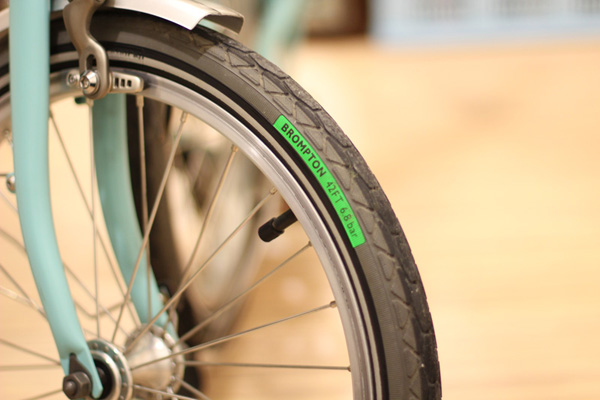
Standard tires that come with Kevlar belts to resist punctures and good treads to grip slippery road surfaces.
Each bike comes with a Zefal bike pump which I find to be pretty decent. I am not a strong person but I am able to get enough air in the tires to be ride-able using it. I don’t recommend getting the EZ wheels because they are actually not so “EZ “to roll on.
The standard gear ratio is too high for us but you can request a lower gear ratio at no cost. Nellie and I rarely use the highest gear- it is actually kind of hard to pedal. You can always opt for 6 speed but that comes at an extra charge and additonal weight. The small front tire makes steering very sensitive but you will get used to it. Another issue I have is that although it weighs 26 lbs (11.8 kg), it gets heavy when you have to carry it over a long distance.
If you don’t like the hassle of getting your bike gate-checked at the airport (you will have to check with your airline if they allow folding bikes at gate check), you can get a luggage to transport it. I find the Tern Airporter Mini to be perfect. The Airporter has integrated TSA combination locks, two rolling wheels and a telescopic handle. It is of airline regulation size at 11.4 × 22.4 × 28 in (29 × 57 × 71 cm). The saddle from the bike has to be removed in order to fit. Not a big deal – just make sure to bring your tools to screw it back on. However, if you order a bike with a rear rack, it will not fit (update 10/23/16 – thanks to a reader – Nenad, the rear rack on a Brompton will fit). The combined weight of both folder and luggage at around 45 lbs (20 kg) is well within the 50 lbs (22.7 kg) limit. Price is $250 USD.
We will be taking our folding bikes to Amsterdam on our next trip, and we will not bring the Airporters luggage. Since we are flying on KLM, a Dutch airline, hopefully they will understand and I have heard of people gate-checking their Bromptons without any problem. One person even brought their Brompton onto an airplane and stowed it in the overhead cabinet (Boeing 777 or larger).
Overall, we love these durable, well-made, stylish, and adorable bikes and have no regrets about purchasing them.
One last piece of advice: When ordering, the wait time is 6-9 weeks but expect at least 8 weeks. If you are planning a trip using them, make sure to order your bike way ahead in advance.
Ideas of places to ride your Brompton folding bike:
